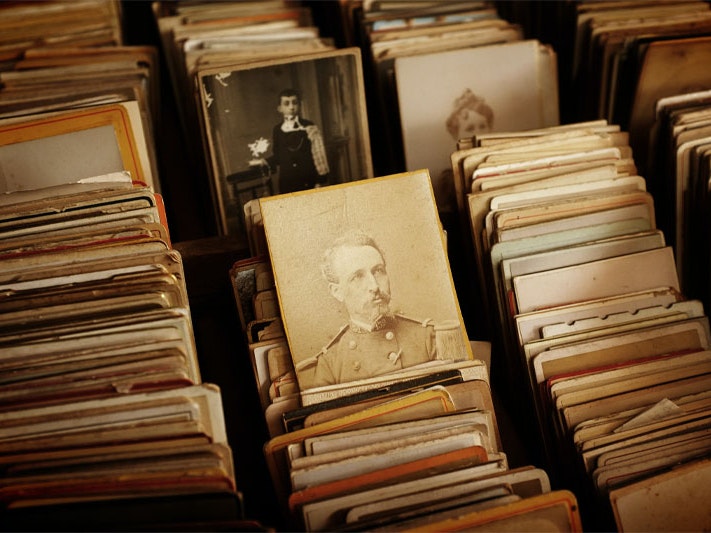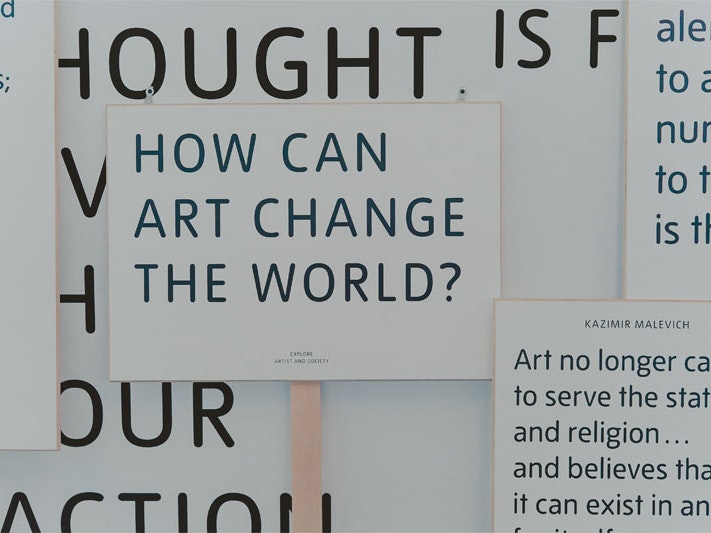
Rich task 3: Re-imagining histories
Examine local histories in your own context, considering the ways in which dominant narratives can be addressed.
Free museum entry for New Zealanders and people living in New Zealand
Open every day 10am-6pm
(except Christmas Day)
Free museum entry for New Zealanders and people living in New Zealand
Discover the ways in which costume and adornment can be used to communicate who we are.
We are looking at the ways that artists use adornment to communicate ideas about who we are, what we value, and what we believe is important.
Through these activities, learners will:
consider the importance of costume, dress, and adornment in honouring, communicating, and representing identity.
In in Pursuit of Venus [infected], Reihana carefully uses costume to construct the encounters between European explorers and Pacific cultures. The characters tell stories of power, tradition, representation, and identity. Reihana has said that costume creates character. It’s something that she has been exploring throughout her artistic career.
In this activity, learners analyse Reihana’s playful, imaginative approaches to identity.
Learners get into pairs – one as sketch artist and one as eyewitness. The sketch artist does not look at the portrait. Give the eyewitness a copy of one of the dramatis personae portraits pictured above, which Reihana made of key characters in in Pursuit of Venus [infected].
The eyewitness describes the person in the portrait to the sketch artist, using as much detail as possible, focusing on details such as composition, posture, costume, and adornment. Encourage the eyewitnesses to be as specific as possible – how many buttons? what kind of hairstyle? do they have any props in their hands? The sketch artist draws the person that is being described to them as accurately as they can. When finished, each pair glues the sketch alongside the portrait and annotates it with the key descriptors that were drawn. Now that they can both see the original portrait, get each pair to write three words to describe the person Reihana has captured.
Discuss the task. What did you learn from the process? What part did costume play in describing the person you were trying to draw? Watch in Pursuit of Venus [infected] again. How does music, soundscape, and conversation also add to our understanding of who these people are, what they are about, and what is important to them?
In this activity, learners explore the ways in which portraiture can be a powerful vehicle for bringing the liminal mythological universe to life.
Over the years, Reihana has been developing a Digital Marae portrait series – imagining and capturing images of ancestral figures traditionally found on the marae. We’ve included a few in the carousel below and more are available on the Digital Marae section of Reihana’s website. You may even be lucky enough to visit the Aotea Centre where two floor-to-ceiling video projections, of Tāne and Papatūānuku, are presented within a work entitled Ihi.
In groups, learners choose one of Reihana’s works that speaks directly to Māori atua and mythology, for example, Mahuika, Marakihau, Maui, or Ranginui. Research the stories that surround these figures, perhaps through reading or listening to stories. Note descriptors of the way these mythological deities look.
Learners draw their own versions of these atua from the pūrākau they’ve found out about. In what ways has Reihana used setting, costume, props, and adornment to tell the visual story of oral traditions of mythology?
Learners could ask whānau and family what god/s, deities, or fabled figures they grew up with. Find out what adornments defined that god, deity, or fabled figure. How do these adornments help us to understand what this figure represents?
What are some of the key ideas Reihana is communicating about race, ethnicity, and culture?
How might portraits play a role in making diversity more visible? In what ways can an artist be an activist and community leader?
Watch this stereoscopic 3D creation video, which screened daily in the Waka Maori pavilion during the 2011 Rugby World Cup. It remains an impressive visual feast, especially when projected large.
Watch this Tales from Te Papa episode about Reihana’s past installation in Te Ara ā Hine.
Watch this digital graphic novella, created and produced by Kiwa for Te Taura Whiri, the Māori Language Commission. This is the second in a series telling the story of Ranginui and Papatūānuku.
Watch Pūrākau, a children’s animated series focused on Māori myths and legends.
Discover Māori myths and legends through the National Library collection.

Examine local histories in your own context, considering the ways in which dominant narratives can be addressed.
![On the set at LOT23 Studio, Auckland, during shooting for in Pursuit of Venus [infected], 2014. Photo by Kallan McLeod. Courtesy of the artist Green screen behind the scenes of iPoV](/assets/76067/1693436757-f20-reihana-collating-insights-tile.jpg?ar=1.3333333333&fit=crop&auto=format)
Use simple activities to ensure the insights gained from the Explore kete are ready to inform a creative response.

Start by creating robust inquiry questions. Map what your learners already know and what fires them up, and get ready to explore!